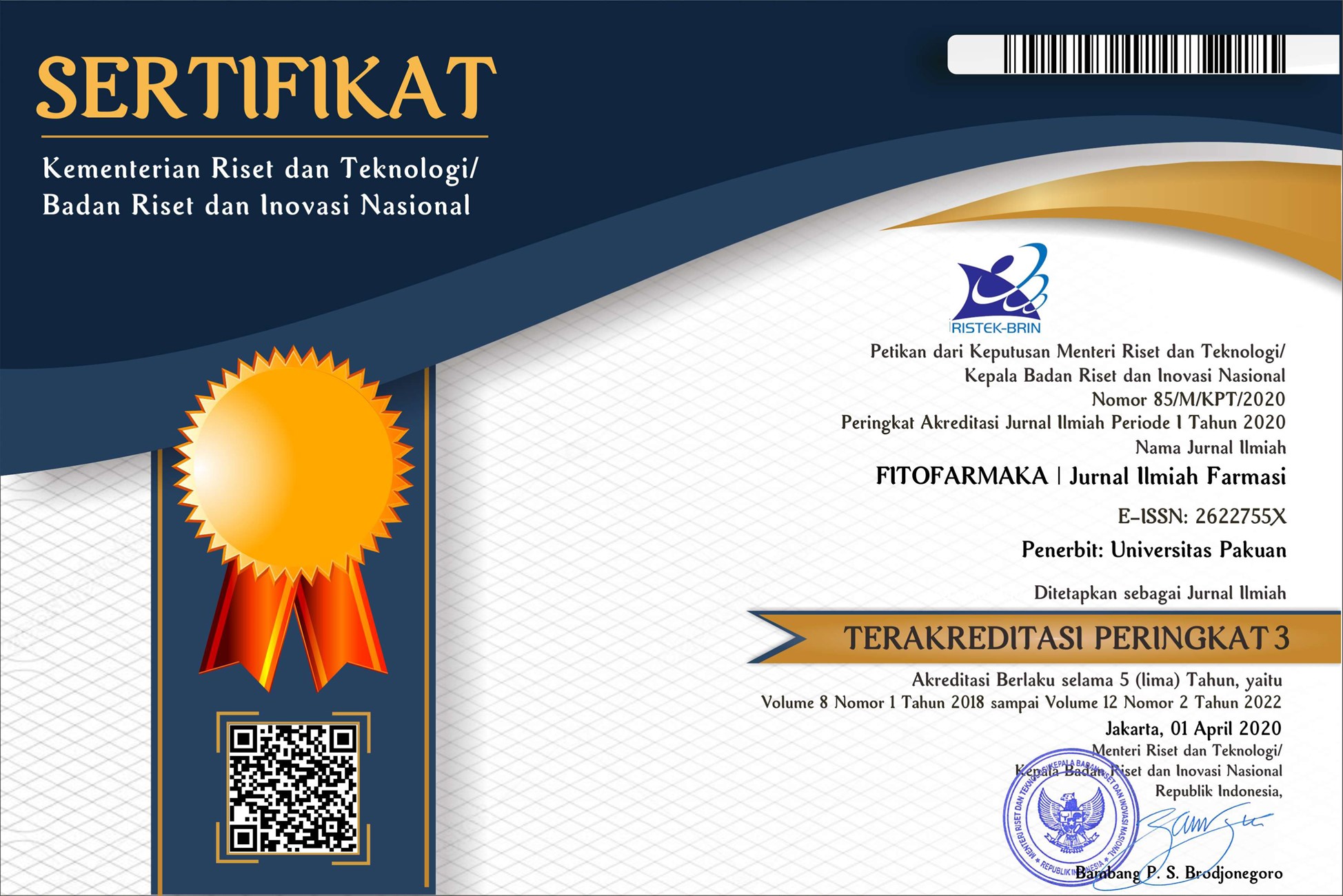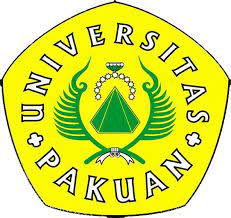Inventory of Medicinal Plants The Treatment and Prevention of Malaria in The East Sentani District, Jayapura Regency
Abstract
Keywords
References
Abay, S. M., Lucantoni, L., Dahiya, N., Dori, G., Dembo, E. G., Esposito, F., Lupidi, G., Ogboi, S., Ouédraogo, R. K., Sinisi, A., Taglialatela-Scafati, O., Yerbanga, R. S., Bramucci, M., Quassinti, L., Ouédraogo, J. B., Christophides, G., & Habluetzel, A. (2015). Plasmodium transmission blocking activities of Vernonia amygdalina extracts and isolated compounds. Malaria Journal, 14(1), 1–19. doi.org/10.1186/s12936-015-0812-2
Abdillah, S., Tambunan, R. M., Sinaga, Y. M., & Farida, Y. (2014). Ethno-botanical survey of plants used in the traditional treatment of malaria in Sei Kepayang, Asahan of North Sumatera. Asian Pacific Journal of Tropical Medicine, 7(S1), 104–107. doi.org/10.1016/S1995-7645(14)60213-3
Amutha, J., Devi, I., Mathavan.P, & Jesan.K.J. (2013). Review on Alkaloidal and Non Alkaloidal Natural Products of Antimalarial Drugs. International Journal of Current Trends in Pharmaceutical Research, 1(2), 97–104.
Anggraito, Y. U., Susanti, R., Iswari, R. S., Yuniastuti, A., Lisdiana, WH, N., Habibah, N. A., & Bintari, S. H. (2018). Secondary metabolites of plants. In Fakultas Matematika dan Ilmu Pengetahuan Alam Universitas Negeri Semarang.
Beis, O., Seran, L., & Nau, G. W. (2022). Ethnopharmacological study of medicinal plants for treating diseases ini Teas Village, Noebeba Subdistrict, South Central Timor District. Gatra Nusantara, 20(1), 46–57.
BPOM Indonesia; (2004). Decree of the Head of Republic Indonesian Food and Drug Administration No. HK. 00.05.4.2411. In BPOM Indonesia (Issue 418). https://jdih.pom.go.id/download/product/905/HK.00.05.4.2411/2004
Budiarti, M., Maruzy, A., Mujahid, R., Sari, A. N., Jokopriyambodo, W., Widayat, T., & Wahyono, S. (2020). The use of antimalarial plants as traditional treatment in Papua Island, Indonesia. Heliyon, 6(12). doi.org/10.1016/j.heliyon.2020.e05562
Chauhan, E. S., Sharma, K., & Bist, R. (2019). Andrographis paniculata: A review of its phytochemistry and pharmacological activities. Research Journal of Pharmacy and Technology, 12(2): 891–900. doi.org/10.5958/0974-360X.2019.00153.7
Darmastuti, R., & Sari, D. K. (2011). The Power of Local Wisdom in Health Communication. Jurnal Komunikator, 3(2), 233–244.
Darmawan, A., & Lipinwati. (2014). Description of Traditional Medicines Used by Malaria Patients in the Simpang IV Sipin Community Health Center, Jambi City 2014. Jmj, 2(2), 114–126.
Dinas Kesehatan Kota Jayapura. (2020). Health Profiles of Jayapura City 2019.
Eni, N. N. S., Sukenti, K., Muspiah, A., & Rohyani, I. S. (2019). Ethnobotany Study of Medicinal Plants in the Hindu Community of Jagaraga Village, West Lombok Regency, West Nusa Tenggara. Biotropika: Journal of Tropical Biology, 7(3), 121–128. doi.org/10.21776/ub.biotropika.2019.007.03.5
Handayani, F. (2021). Ethnobotany of plants used in traditional medicine by healers in Way Tuba District, Way Kanan Regency. [Thesis. Universitas Islam Negeri Raden Intan]
Hasibuan, M. N. (2022). Effectiveness of African leaf extract (Vernonia amygdalina) as larvacide in the larvae of the Aedes aegypti mosquito (Issue 1808260080) [Skripsi, Universitas Muhammadiyah Sumatera Utara].
Jumiyati, S., Parumpu, F. A., & Budiman. (2021). Types and Utilization Identification of Medicinal Plants: Developing Strategy for Non-Timber Forest Products in Buffer Zone. IOP Conference Series: Earth and Environmental Science, 870(1). https://doi.org/10.1088/1755-1315/870/1/012017
Maja, P. K. (2021). Profile of traditional medicines used in Wae la Villagers, Golewa District, Ngada Regency, East Nusa Tenggara Province. [Skripsi, Universitas Sanata Dharma].
Mawunu, M. (2022). Biodiversity and Ethnobotany of Medicinal Plants of the Small Songo City, Angola. Journal of Quality in Health Care & Economics, 5(4), 1–24. doi.org/10.23880/jqhe-16000290
Mozaniel, S. de O., Wanessa, A. da C., Fernanda, W. F. B., Marilena, E. A., Gracialda, C. F., & Raul, N. de C. J. (2018). Phytochemical profile and biological activities of Momordica charantia L. (Cucurbitaceae): A review. African Journal of Biotechnology, 17(27), 829–846. doi.org/10.5897/ajb2017.16374
Mufidah, F. & Zuhrotun, A. (2020). Medicinal Plants For Malaria Treatment In Indonesia Based On Ethnopharmacy. FITOFARMAKA: Jurnal Ilmiah Farmasi, 10(2), 106–121. doi.org/10.33751/jf.v10i2.2134
Napagoda, M., Gerstmeier, J., Wesely, S., Popella, S., Lorenz, S., Scheubert, K., Svatoš, A. & Werz, O. (2014). Inhibition of 5-lipoxygenase as anti-inflammatory mode of action of Plectranthus zeylanicus Benth and chemical characterization of ingredients by a mass spectrometric approach. Journal of Ethnopharmacology, 151(2): 800-809. doi.org/10.1016/j.jep.2013.11.004
Phumthum, M. & Balslev, H. (2018). Use of Medicinal Plants Among Thai Ethnic Groups: A Comparison. Economic Botany, 73(1), 64–75. doi.org/10.1007/s12231-018-9428-0
Rehena, J. F. (2010). In Vitro Acitivities Test of Papaya Leaf Extract ( Carica papaya . LINN ) as an Antimalaria Agent. Jurnal Ilmu Dasar, 11(1), 96–100.
Silalahi, M. (2012). Potency of medicinal plants and traditional medicine in maintaining public health. Jurnal Dinamika Pendidikan, 5(1).
Singh, S. P., Kumar, S., Mathan, S. V, Singh Tomar, M., Rishi, &, Singh, K., Kumar Verma, P., Kumar, A., Kumar, S., Singh, R. P., & Acharya, A. (2020). Therapeutic application of Carica papaya leaf extract in the management of human diseases. Journal of Pharmaceutical Sciences, 28(2): 735–744. doi.org/10.1007/s40199-020-00348-7
Suherman, H. (2019). The Effect of Age, Gender, and Knowledge on Self-medication. Viva Medika: Jurnal Kesehatan, Kebidanan Dan Keperawatan, 10(2): 94–108. doi.org/10.35960/vm.v10i2.449
Sumayyah, S., & Salsabila, N. (2017). Traditional medicine: between efficacy and side effects. Majalah Farmasetika, 2(5): 1–4. doi.org/10.24198/farmasetika.v2i5.16780
Taek, M. M. (2020). The Prevention and Treatment of Malaria in Traditional Medicine of Tetun Ethnic People in West Timor Indonesia. Open Access Journal of Complementary & Alternative Medicine, 5(1). 10.32474/oajcam.2019.01.000121
Tariq, A., Mussarat, S., Adnan, M., Abdelsalam, N. M., Ullah, R., & Khan, A. L. (2014). Ethnoveterinary Study of Medicinal Plants in a Tribal Society of Sulaiman Range. Scientific World Journal, 2014. doi.org/10.1155/2014/127526
Tertiana, N. I. (2021). The effect of pare fruit extract on reducing TNF-α expression and the incidence of anemia in balb/c mice infected with Plasmodium berghei [Thesis, Universitas Islam Negeri Maulana Malik Ibrahim].
Wedu, F. Y. S. (2021). Study of understanding and representing the use of traditional medicine for self-medication in the Mata Redi Village, Central Sumba area [Universitas Sanata Dharma].
Widiarti, A., Bachri, A. A., & Husaini, H. (2016). Analysis of the influence of local wisdom behaviors on traditional medicine uses on the people of Palangka Raya. Jurnal Berkala Kesehatan, 2(1): 30. doi.org/10.20527/jbk.v2i1.4842
DOI: 10.33751/jf.v13i1.6396
 Abstract views : 165
Abstract views : 165
Refbacks
- There are currently no refbacks.















